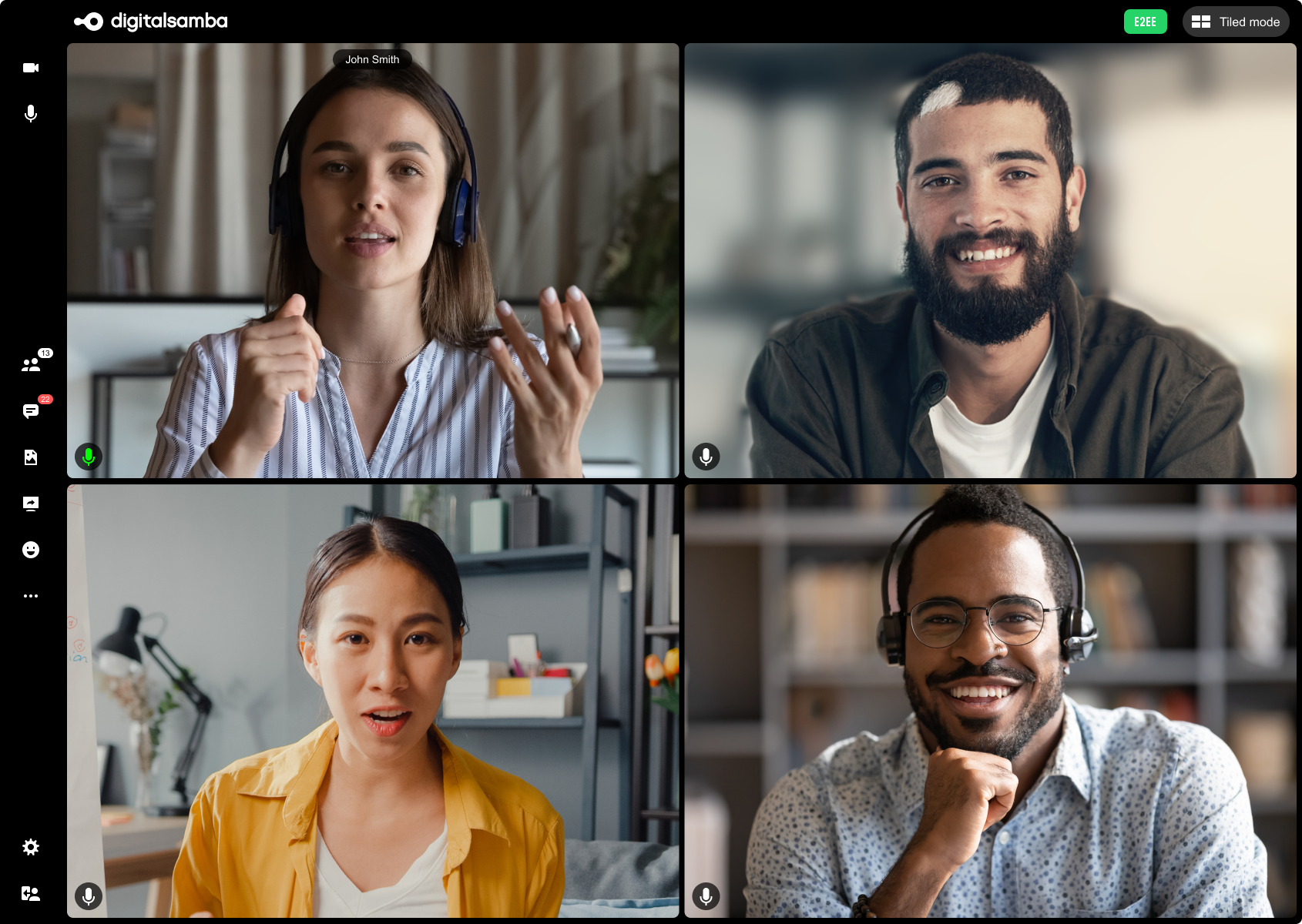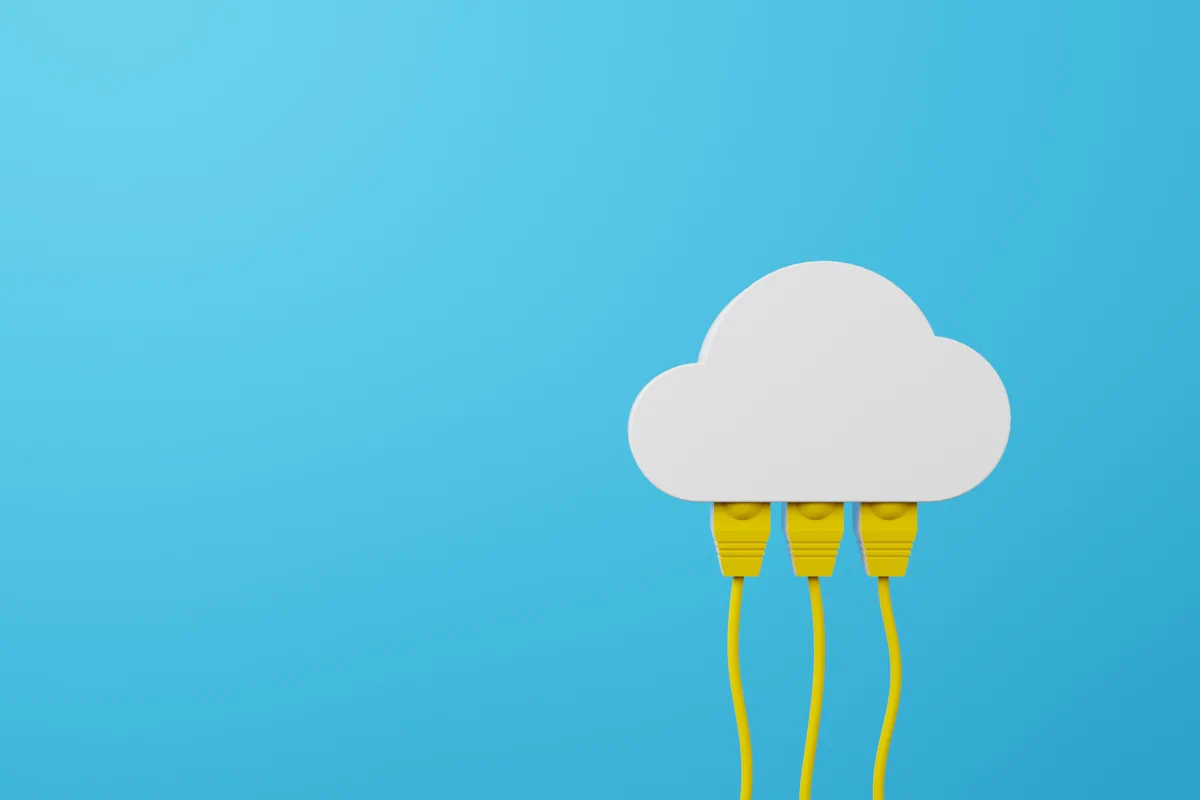Understanding Jitter: Causes, Effects, and Mitigation in Networking
Jitter is an important networking concept. It refers to changes in the time for data packets to reach their destination. Jitter can negatively impact network performance. It can cause choppy calls, lost packets, and slowdowns. This article explores what jitter is and what causes it. It examines how jitter affects networks. It also discusses ways to reduce jitter. Doing so improves the overall performance and quality of network service.
Table of Contents
- What is jitter in networking?
- What causes network jitter?
- Impact of jitter on real-time applications
- What is a good jitter?
- Mitigating network jitter
- Experience smooth video conferencing with Digital Samba's SDK/API
- Conclusion
What is jitter in networking?
Jitter means small, random changes in the time between data packets arriving across a network. It measures how inconsistent the delay is between packets.
For example, say you are on a video call between two offices. To have good call quality, the packets carrying audio data need to reach at regular intervals. But network congestion can delay some packets longer than others. This makes the timing between packet arrivals uneven.
The receiving end sees these uneven delays between packets as jitter. Packets come faster or slower than the average arrival rate. This makes the timing erratic. It can lead to choppy audio or video during real-time streaming.
Jitter refers to the slight difference in the time it takes for packets to arrive from one end to the other. It becomes a major issue in latency-sensitive apps like video conferencing, gaming and voice calls. These require steady network timing. By monitoring jitter, network managers can find points of congestion. They can troubleshoot connection problems affecting time-sensitive traffic.
What causes network jitter?
Several factors lead to jitter or uneven delays between packets reaching their destination. Here are some of the major causes of jitter in networking:
Network congestion
Packet loss
Different packet arrival times
Network interference
Inadequate bandwidth
Routing issues
Network equipment issues
Improper queuing
Regular tests for network jitter can help figure out these causes. Once we know, we can make things smoother. We can manage the traffic, stop network interference, and make sure our network tools are in good shape. In the next sections, we'll dive into these solutions better.
Impact of jitter on real-time applications
Jitter severely impacts real-time apps like video calling, live streaming, online gaming and VoIP calls. These apps need timely delivery of packets for good performance.
High jitter disrupts the smooth flow of packets. This creates lag, choppy audio/video and even connection drops. Here is how jitter affects key real-time apps:
Video conferencing
VoIP calls
Live video streaming
Online gaming
Jitter hampers the performance of real-time applications by disrupting timely packet delivery. Managing network health to minimise jitter is crucial for ensuring quality user experiences on latency-sensitive apps and services.
What is a good jitter?
Good jitter refers to the acceptable jitter level for a given real-time application. Each application has a jitter threshold where communication quality starts to suffer. Exceeding this threshold results in lagging, choppy audio, video freezing, or other degradation of real-time performance.
For voice calls over the internet, jitter should stay under 150 milliseconds to prevent choppiness. Video chatting requires lower, more consistent jitter - around 30 milliseconds or less is ideal. Up to 200 milliseconds of jitter may be tolerable before video quality drops noticeably.
Gaming and virtual reality have the strictest jitter requirements as they rely on extremely responsive data transmission. For smooth gaming, aim for 30-50 milliseconds or less. This range ensures the quick reaction times gamers expect.
Some variability in jitter is normal on any network; small, transient spikes are unavoidable. However, excessive jitter can degrade real-time applications. When delay fluctuates wildly, video freezes, games lag, and call quality suffers.
By optimising jitter thresholds for each application's needs, networks remain reliable. Calls stay clear, gaming reactive, and video fluid. Monitoring jitter facilitates catching spikes before they impact users. If the delay remains steady overall, real-time services can function smoothly. Setting jitter limits based on quality requirements prevents network variability from disrupting performance. For the best user experience, "good" jitter stays within dependable bounds.

Understanding and Preventing Packet Loss in WebRTC
Read the blog
Mitigating network jitter
Excessive jitter can really mess up real-time apps like video calls, games, and voice calls. But no worries! Here are some simple ways to smooth things out:
Upgrade bandwidth
Optimise packet buffers
Traffic shaping
Dynamic routing
Queue management
Fault tolerance
Monitoring
By following these simple tips, you can keep real-time apps running super smooth, ensuring a hassle-free experience for users!
Experience smooth video conferencing with Digital Samba's SDK/API

Digital Samba's SDK/API helps mitigate jitter and improve video conferencing quality by optimising data transmission rates based on real-time network conditions. While we cannot control clients' network environments completely, our technology dynamically adapts to bandwidth constraints to provide the smoothest video experience possible under the circumstances.
By fine-tuning video resolution, frame rates and other parameters, we maximise quality and continuity given the available connectivity. That means reducing jitter, lag and pixelation issues as much as current network limitations allow. The result is a more resilient conferencing solution that degrades gracefully in suboptimal conditions, rather than failing outright
Conclusion
Jitter is an issue in modern networks that can hurt performance. By knowing what causes it, like congestion and timing problems, we can take steps to reduce jitter. Effective queue management, traffic shaping, and buffering can minimise jitter. With careful setup and planning, jitter can be reduced to give reliable connectivity and service quality across networks.
Elevate your video conferencing game with Digital Samba's SDK/API. Enjoy a smoother, more enjoyable virtual collaboration experience that leaves a lasting impression on your team and clients. It's time to make every video call count. Sign up to get started!
Share this
You May Also Like
These Related Stories

Optimising Real-Time Communications with Jitter Buffer

Understanding Network Speed, Bandwidth, and Throughput


